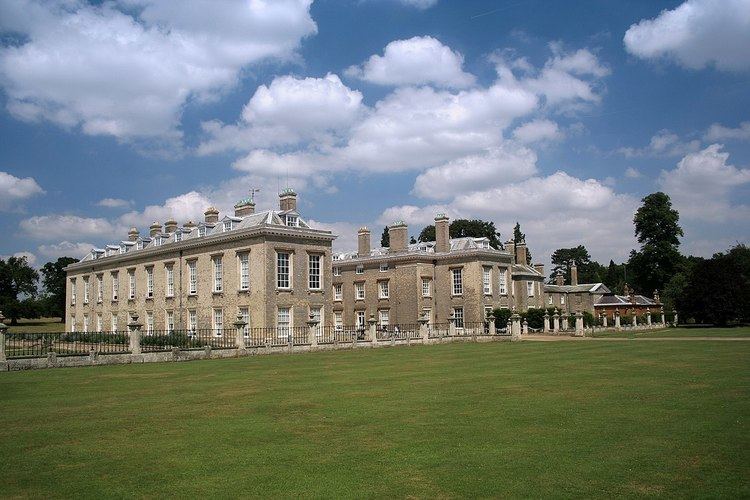Name John Spencer Role Landowner | Died April 14, 1522 | |
 | ||
People also search for Robert Spencer, 2nd Earl of Sunderland | ||
for good tribute to john spencer and the west wing
Sir John Spencer (1455 – 14 April 1522) was an English nobleman, politician, sheriff, knight, landowner, entrepreneur, and ancestor of the Spencer family.
Contents
In 1469, John Spencer's uncle – another John Spencer – had become feoffee (feudal lord) of Wormleighton in Warwickshire and a tenant at Althorp in Northamptonshire in 1486. The Spencers’ administration of their Northamptonshire and Warwickshire estates was admired and often emulated by gentlemen all over England. Sheep from their pastures were purchased for breeding and it is probable that the family’s success as farmers was rarely equalled in the century. The Spencers were granted a coat of arms in 1504, "Azure a fess Ermine between 6 sea-mews’ heads erased Argent" which bears no resemblance to that used by the family after c. 1595.
John Spencer first made a living by trading in livestock and other commodities and eventually saved enough money to purchase both the Wormleighton and Althorp lands. Wormleighton was bought in 1506, the manor house was completed in 1512. In 1508, John Spencer also purchased the estate of Althorp with its moated house and several hundred acres of farmland. He had grazed sheep here from the 1480s. Impressed by the quality of the land, he eventually bought it and rebuilt the house in 1508. At that time, his estate and mansion in Warwickshire were considerably larger, the house in Wormleighton was four times the size of Althorp. In 1511 he made further purchases to acquire much of the surrounding countryside, including the villages of Little Brington and Great Brington as well their parish church of St Mary the Virgin, from Thomas Grey, 2nd Marquess of Dorset. By putting down roots at Althorp, Sir John provided what was to become a home for the next 19 generations.
Between 1513 and 1515, Sir John Spencer devoted much funds and planning to the parish church for Althorp, St Mary the Virgin in Great Brington. In 1513, he appointed Thomas Heritage to be rector of the church, who had previously been chaplain to King Henry VII and surveyor of the monarch's works at Westminster Abbey. It is altogether probable that Heritage designed and superintended the execution of Spencer's idea for a family chapel at the parish church. His will, dated the 12th day of April 1522, just two days before Sir John's death, states that he virtually rebuilt the whole church. His bequests included "oon hool syte of vestments and a chales", "the making of the chauncell roffe with the ledde, wall and wyndowes, and my armes to be sett in the same wyndowes" as well as his tomb, shared with his lady Isabella Graunt. For this tomb, to be placed in the easternmost bay of the family chapel, nearest to the altar, he left the sum of 20 pounds.
In 1519 John Spencer was knighted by King Henry VIII, died three years later and was buried in the new family chapel at Great Brington. His younger son and successor Sir William Spencer later bequeathed the church's east window of stained glass which depicted St. John the Baptist and the Spencer coat of arms, now in a south window of the chancel, in memory of his father.
John spencer memorial
Family
Sir John Spencer married Isabella Graunt, daughter of Sir Walter Graunt, of Snitterfield, and had issue. Upon his death in 1522, his estates at Wormleighton and Althorp passed to his younger son Sir William Spencer, who died ten years later. Spencer is a direct male-line ancestor of Prime Minister Sir Winston Spencer Churchill and Lady Diana Spencer, Princess of Wales.
